Name George Maurier | Role Cartoonist Movies Peter Ibbetson, Trilby | |
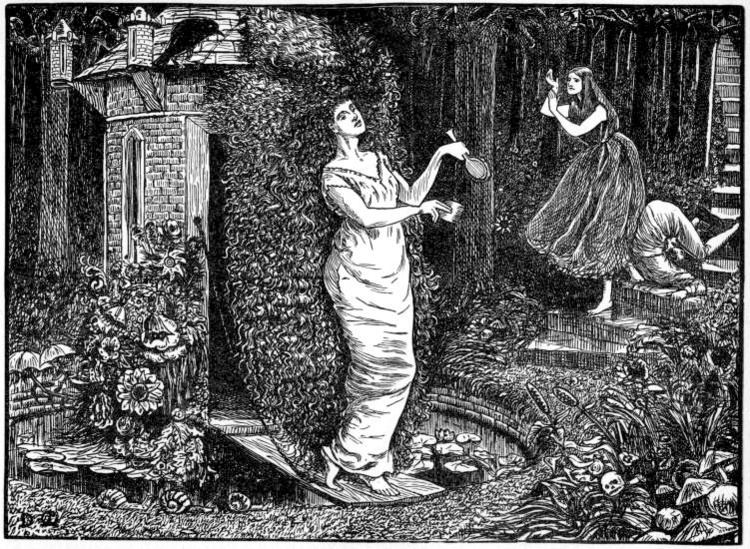 | ||
Born George Louis Palmella Busson du Maurier6 March 1834Paris ( 1834-03-06 ) Children Gerald du Maurier, Sylvia Llewelyn Davies, Guy du Maurier, Beatrix du Maurier, Marie Louise du Maurier Grandchildren Daphne du Maurier, Peter Llewelyn Davies Books Trilby, The Martian, English society, Social pictorial satire, Svengali: George Du Maurier's Similar People Gerald du Maurier, Daphne du Maurier, Sylvia Llewelyn Davies, Peter Llewelyn Davies, Angela du Maurier | ||
George du maurier s house
George Louis Palmella Busson du Maurier (6 March 1834 – 8 October 1896) was a Franco-British cartoonist and author, known for his cartoons in Punch and for his novel Trilby. He was the father of actor Sir Gerald du Maurier and grandfather of writers Angela du Maurier and Dame Daphne du Maurier. He was also the father of Sylvia Llewelyn Davies and grandfather of the five boys who inspired J.M. Barrie's Peter Pan.
Contents
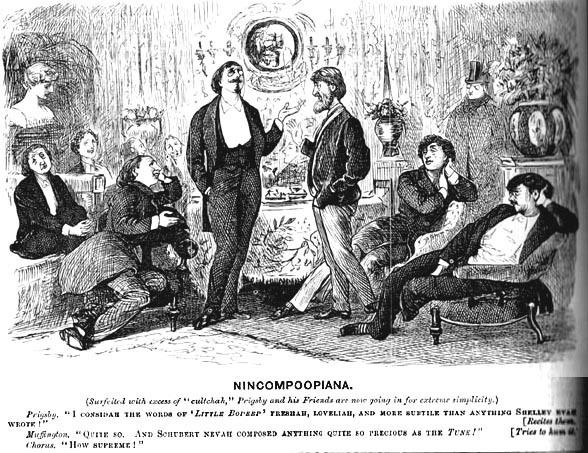
Literary London
Early life
George du Maurier was born in Paris, the son of Louis-Mathurin du Maurier and Ellen Clarke, daughter of Regency courtesan Mary Anne Clarke. He was brought up to believe that his aristocratic grandparents fled France during the Revolution, leaving vast estates behind in France, to live in England as émigrés. However, du Maurier's grandfather, Robert-Mathurin Busson, was actually a tradesman who left Paris in 1789 to avoid fraud charges, and later changed the family name to du Maurier.
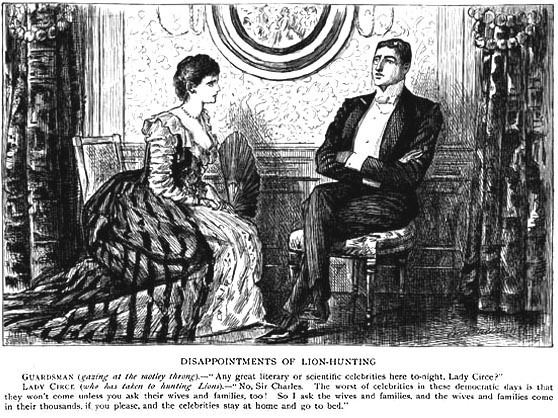
Du Maurier studied art in Paris, and moved to Antwerp, Belgium, where he lost vision in his left eye. He consulted an oculist in Düsseldorf, Germany, where he met his future wife, Emma Wightwick. He followed her family to London, where he married Emma in 1863. The couple settled in Hampstead around 1877, first in Church Row and later at New Grove House. They had five children: Beatrix (known as Trixy), Guy, Sylvia, Marie Louise (known as May) and Gerald.
Cartoonist
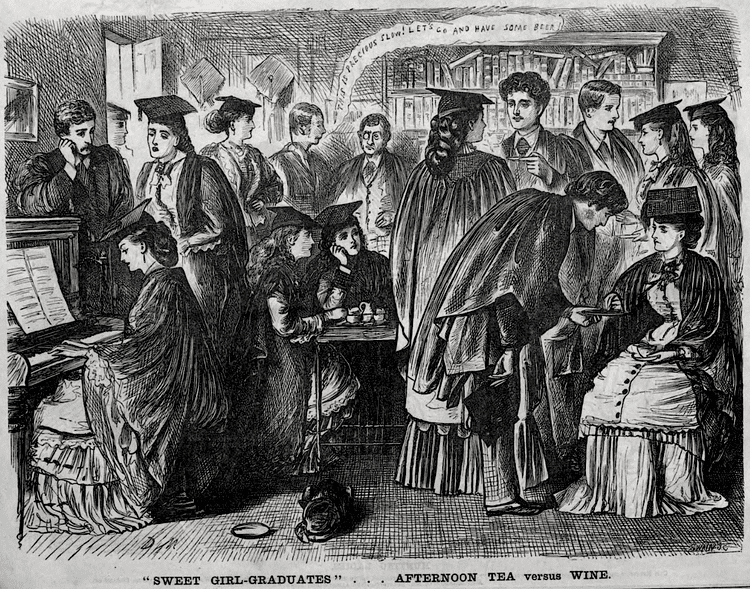
He became a member of the staff of the British satirical magazine Punch in 1865, drawing two cartoons a week. His most common targets were the affected manners of Victorian society, the bourgeoisie and members of Britain's growing Middle Class in particular. His most enduringly famous cartoon, True Humility, was the origin of the expressions "good in parts" and "a curate's egg". (In the caption, a bishop addresses a curate [a very humble class of clergyman] whom he has condescended to invite to breakfast: "I'm afraid you've got a bad egg, Mr. Jones." The curate replies, "Oh no, my Lord, I assure you – parts of it are excellent!") In an earlier (1884) cartoon, du Maurier had coined the expression "bedside manner" by which he satirized actual medical skill. Another of du Maurier's notable cartoons was of a videophone conversation in 1879, using a device he called "Edison's telephonoscope".
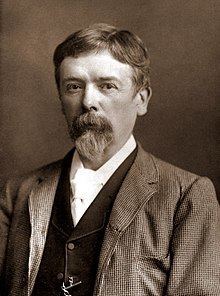
In addition to producing black-and-white drawings for Punch, du Maurier created illustrations for several other popular periodicals: Harper's, The Graphic, The Illustrated Times, The Cornhill Magazine, and the religious periodical Good Words. Furthermore, he did illustrations for the serialization of Charles Warren Adams's The Notting Hill Mystery, which is thought to be the first detective story of novel length to have appeared in English. Among several other novels he illustrated was Misunderstood by Florence Montgomery in 1873.
Writer
Owing to his deteriorating eyesight, du Maurier reduced his involvement with Punch in 1891 and settled in Hampstead, where he wrote three novels. His first, Peter Ibbetson, was a modest success at the time and later adapted to stage and screen, most notably in a film, and as an opera.
His second novel Trilby, was published in 1894. It fitted into the gothic horror genre which was undergoing a revival during the fin de siècle, and the book was hugely popular. The story of the poor artist's model Trilby O'Ferrall, transformed into a diva under the spell of the evil musical genius Svengali, created a sensation. Soap, songs, dances, toothpaste, and even the city of Trilby in Florida, were all named for the heroine, and the variety of soft felt hat with an indented crown that was worn in the London stage dramatization of the novel, is known to this day as a trilby. The plot inspired Gaston Leroux's 1910 novel Phantom of the Opera and the innumerable works derived from it. Du Maurier eventually came to dislike the persistent attention given to his novel.
The third novel was a long, largely autobiographical work entitled The Martian, which was only published posthumously (1896).
Personal life and death
George du Maurier was a close friend of Henry James, the novelist; their relationship was fictionalised in David Lodge's Author, Author.
He was buried in St John-at-Hampstead churchyard in Hampstead parish in London.
